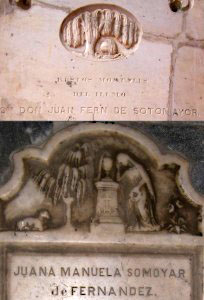 This summer I traveled to Colombia, visiting the capital Bogotá and Cartegena on the country’s Caribbean coast. Cartegena has a fascinating history. Founded in 1533, it was there that New World treasures were gathered before being loaded aboard galleons for the voyage to Spain. Not surprisingly, it was attacked—five times in the 16th century—perhaps most successfully (depending upon your point of view) by Drake in 1586, who ransomed the city for a huge sum. Following Drake’s raid, a massive wall, Las Murallas, was built encircling the city. Today, there’s a great walk along the top of it.
This summer I traveled to Colombia, visiting the capital Bogotá and Cartegena on the country’s Caribbean coast. Cartegena has a fascinating history. Founded in 1533, it was there that New World treasures were gathered before being loaded aboard galleons for the voyage to Spain. Not surprisingly, it was attacked—five times in the 16th century—perhaps most successfully (depending upon your point of view) by Drake in 1586, who ransomed the city for a huge sum. Following Drake’s raid, a massive wall, Las Murallas, was built encircling the city. Today, there’s a great walk along the top of it.
Cartegena’s historic buildings include many early churches and the Palace of the Inquisition. It was at the latter that I ran into an old friend. The Palace is of late colonial date, being completed in 1776 (the Inquisition ended with independence in 1821). Today it houses a museum that’s well worth a visit. But in its courtyard I was surprised to see a 19th-century gravestone built into a wall. The name read Don Fern[ando] De Sotomayor, and the dates were 1778–1838. But what caught my eye was the carving at the top: a willow tree shading an urn. I had seen that before.
The willow and urn motif on gravestones is well known from early cemeteries in the Northeast of the United States. One of the classic studies in historical archaeology—and in archaeology in general—was James Deetz and Edwin Dethlefsen’s 1966 article “Death’s Heads, Cherubs and Willow Trees: Experimental Archaeology in Colonial Cemeteries,†in American Antiquity. In it, the authors looked at the changes in the motifs appearing on gravestones, from death’s heads (winged skulls) popular in until the mid-18th century, to cherubs (winged cherub heads) which become more popular in the later 18th century, to the willow and urn which comes in during the late 18th century but only becomes prevalent in the first half of the 19th century. (A version of this article, written by Deetz and Dethlefsen for Natural History, can be read here.)
Sotomayor’s gravestone wasn’t unique. In the Santo Domingo Church, which was built at the end of the 16th century, portions of the floor are paved with tombstones, mainly from the 19th century. One, dated 1858, was for Juana Manuela Somoyar de Fernandez. It is elaborately decorated, with an urn in the center, flanked by a willow and a mourning figure in classical garb. In one corner of the relief is a lamb, with a blooming plant in the other. So what was a style of gravestone popular in New England doing here in Colombia?
Deetz and Dethlefsen interpreted the changing styles of gravestones in the framework of New England’s ecclesiastical history. The decline of the death’s head and rise of the cherub they saw as coinciding with the decline of orthodox Puritanism and the rise of more liberal views in the later 18th century:
Cherubs reflect a stress on resurrection, while death’s heads emphasize the mortality of man. …Early epitaphs, with death’s head designs, stress either decay and life’s brevity or a Calvinistic emphasis on hard work and exemplary behavior on the part of the predestined. On the other hand, epitaphs with cherub stones tend to stress resurrection and later heavenly reward.
And the willow and urn? They linked it to the development of “less emotional, more intellectual religions†(they give Unitarianism and Methodism as examples). But how can that explanation, fine in Protestant New England, work in Cartegena, with a Catholic population?
The answer is found in architectural movements, the influence of which Deetz and Dethlefsen noted:
This sequence of change did not occur in a vacuum, unrelated to any cultural change elsewhere; indeed, the sequence of three major types also takes place in England, the cultural parent of the Massachusetts colony, but about a half century earlier. Thus cherubs have become modal by the beginning of the Georgian period (1715), and urns and willows make their appearance, as a part of the neoclassical tradition, in the 1760’s. In fact, the entire urn and willow pattern is a part of the larger Greek Revival….
But the urn and willow in Cartegena suggest that Greek Revival had a universal appeal, regardless of Christian denomination. Architectural movement transcended religion. Now, I’m curious to know about 18th-century gravestones in Spain. Is there a similar relationship, with different motifs, between Spain and its New World colonies as Deetz and Dethlefsen observed for England and its colonies in the Northeast?
For more about colonial cemeteries, see our articles “Early American Gravestones†and “Headstones for Dummies, the New York Edition.â€
This entry was posted by Mark Rose on
Thursday, September 10, 2009.
Discussion of this blog entry is now closed.
Comments posted here do not represent the views or policies of the Archaeological Institute of America.

